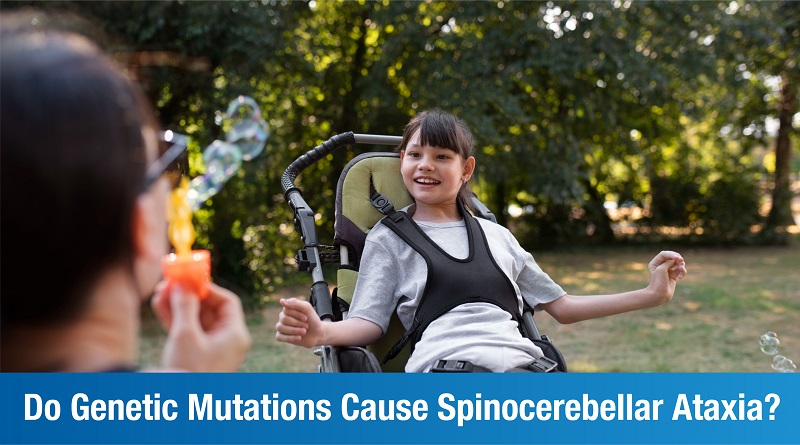
Spinocerebellar Ataxia (SCA) is one among a group of rare diseases known collectively, as hereditary ataxias. It is a progressive condition that has no cure, and lifelong treatment is necessary to control the symptoms and promote functionality. Given the severity of SCA and its symptoms, early diagnosis and intervention is crucial, which calls for genetic testing. Here we take a closer look at the role of genetic mutations in Spinocerebellar Ataxia and how that can help with a diagnosis.
Understanding Spinocerebellar Ataxi
Spinocerebellar Ataxia, Spinocerebellar Atrophy, or Spinocerebellar Degeneration is a genetic disease caused by either a recessive or dominant gene. It refers to a group of ataxias that are known to be hereditary and cause harm to the cerebellum. This part of the brain maintains balance and controls movements. Spinocerebellar Ataxia may result in non-coordinated gait, impaired hand-eye coordination, and abnormal speech. Since this condition affects the nervous system, it is known as a nervous disorder. While there is no cure for the condition, intensive neuro-rehabilitation along with physical and occupational therapy can reduce disease progression and maximize the functionality of the patient.
Symptoms of Spinocerebellar Ataxia
Each of the various subtypes of Spinocerebellar Ataxia has its own unique symptoms, but they also have several in common. Spinocerebellar Ataxia can manifest from adolescence to late adulthood, depending on the subtype. In general, the early warning signs of the condition include:
- Trouble with balance and coordination
- Involuntary eye movements
- Poor hand-eye coordination
- Speech abnormalities
- Learning and memory problems
- Spasticity
Spinocerebellar Ataxia and genetic mutation
Spinocerebellar Ataxia occurs because of genetic mutations of various kinds. When it is inherited in an autosomal dominant fashion, it is sometimes caused due to trinucleotide repeat expansions. A trinucleotide repeat is simply a repeated segment of DNA. When such repetitions occur more frequently than normal, it can lead to genetic disorders. The higher the number of repetitions, the more severe the condition, and the earlier the onset. This phenomenon is known as Anticipation. In autosomal dominant inheritance, each new-born has a 50% chance of inheriting the mutated copy of the gene. Other types of SCA happen due to autosomal recessive inheritance, and these cases typically manifest symptoms at an earlier age. Anticipation does not happen in autosomal recessive inheritance.
It is also important to note here that the genetic cause of Spinocerebellar Ataxia remains unknown in 25-40% of the cases. This is what makes finding an effective cure so challenging.
Diagnosing Spinocerebellar Ataxia
It is possible for families to test for many of the genes that cause Spinocerebellar Ataxia, particularly the risk of passing it on to a child. There are, in fact, genetic registries where healthcare professionals can request these tests. Patients who are displaying symptoms will typically undergo genetic testing first so as to pinpoint the exact subtype of Spinocerebellar Ataxia that they have. In cases where the gene cannot be identified, the doctor will recommend a CT scan or MRI to identify brain abnormalities typically observed in SCA patients. Other tests include a general physical scan, neurological testing and a detailed family history, particularly when the genetic test is known to present false negatives or false positives. Treatment for SCA involves a mix of medication, Physical Therapy, Occupational Therapy, and Speech Therapy to control symptoms.
In conclusion, while navigating through Spinocerebellar Ataxia might be difficult, parents can offset the risk of passing it onto their children through proper genetic testing in advance, as part of family planning. Moreover, tailored treatment plans go a long way in keeping the condition under check and ensuring a functional and fulfilling life, as much as possible.
https://rarediseases.info.nih.gov/diseases/10748/spinocerebellar-ataxia










